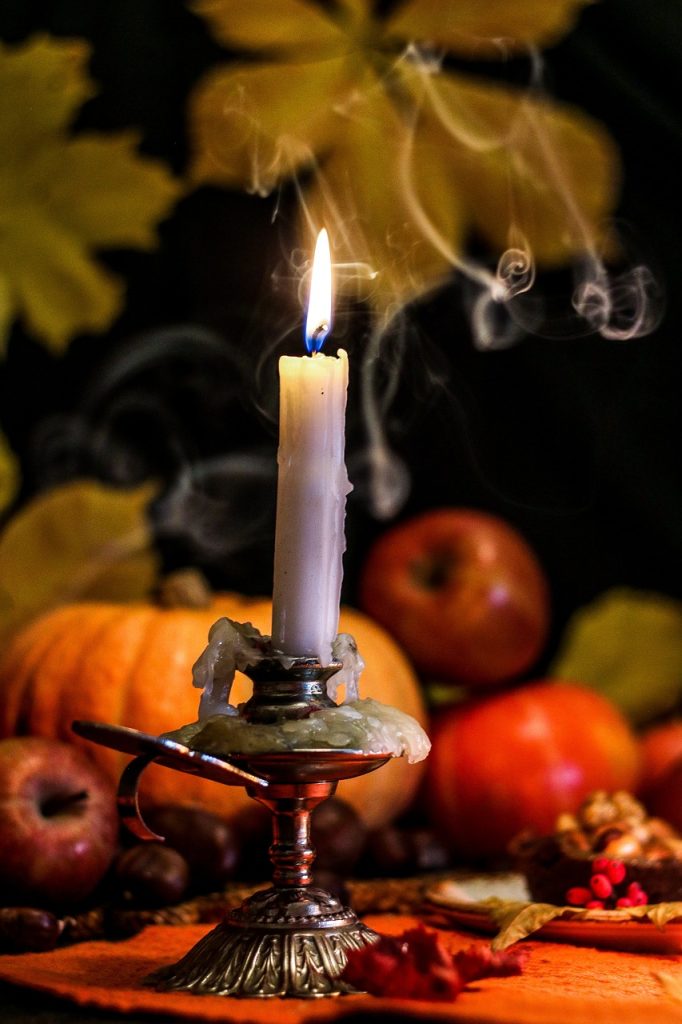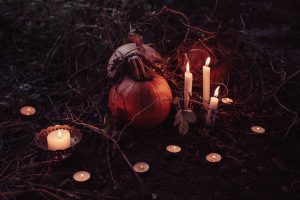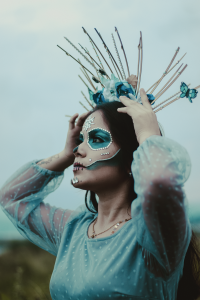
A Journey Through History, Legends, and Modern Celebrations of Samhain.
Samhain, (pronounced “say win”) a festival with roots deep in ancient Celtic traditions, marks the end of the harvest season and the beginning of winter. Celebrated from sunset on October 31st to sunset on November 1st, Samhain is a time when the veil between the living and the dead is believed to be at its thinnest. This festival has significantly influenced modern celebrations such as Halloween and shares intriguing parallels with Día de los Muertos (Day of the Dead). Understanding its history and evolution can enrich how we observe this time of year today, even incorporating crystal energy into our celebrations.
Historical Roots of Samhain
Dating back over two millennia, Samhain was primarily celebrated by the Celts in what is now Ireland, the United Kingdom, and northern France. It marked one of the essential fire festivals in the Celtic calendar. The Celts believed that during this time, spirits could more easily enter our world. Thus, they would light bonfires and wear costumes to ward off malevolent spirits while welcoming ancestral souls. Food offerings were also made to appease wandering ghosts. ( are you seeing Halloween here, ok wandering kids but still….)
The significance of Samhain as a liminal time—a bridge between worlds—was profound. It was not only considered an opportunity to honor ancestors but also a time for divination, seeking guidance for the coming year. The Druids, Celtic priests, played a crucial role in these celebrations by leading rituals that included fire sacrifices and fortune-telling.
Central to Samhain’s observance was the veneration of ancestors. The Celts held a deep respect for those who had passed on, believing that their spirits returned during Samhain to visit their kin. This belief fostered a sense of continuity between generations, as families would set places at their tables for deceased relatives, offering food and drink as gestures of hospitality and remembrance. These customs were not merely acts of nostalgia but were rooted in a spiritual understanding that the living could draw strength and wisdom from those who came before them.
Samhain was also a time rich with divination practices, as people sought insights into their futures and guidance for decision-making in the coming year. The Celts believed that during this transitional phase, when supernatural forces were at play, individuals could gain glimpses into what lay ahead. Various methods of divination were employed, from scrying into water or mirrors to casting stones or bones. These practices were not only personal but also communal, with entire communities engaging in rituals designed to predict outcomes for crops, weather conditions, and other critical aspects of life.
The Druids, who served as priests, teachers, and judges within Celtic society, played an essential role in Samhain celebrations. Highly revered for their wisdom and mystical knowledge, the Druids led ceremonies that facilitated communication with the spirit world. These rituals often included fire sacrifices—a key element of Celtic worship. Bonfires were lit on hilltops across the land as symbols of protection and purification. Participants would walk between two fires or leap over them as an act of cleansing and renewal.
Samhain’s importance transcended mere superstition; it was a deeply spiritual experience embedded in Celtic culture. The festival encapsulated themes of death and rebirth, darkness yielding to light—a metaphorical reflection on life’s cyclical nature. It was a time when communities came together to acknowledge both mortality and hope.
Parallels with Día de los Muertos and All Hallows’ Eve

Meanwhile, across the Atlantic in Mexico and parts of Latin America, Día de los Muertos evolved independently yet shares striking similarities with Samhain. Celebrated from October 31st to November 2nd, it honors deceased loved ones through vibrant altars (ofrendas), decorated with their favorite foods, photos, marigolds, and candles. Like Samhain’s belief in proximity to spirits, Día de los Muertos emphasizes communion with ancestral souls.
Despite their cultural differences—Celtic solemnity versus Mexican festivity—both holidays recognize death as an integral part of life’s cycle and focus on reconnecting with ancestors.
Despite their cultural differences—Celtic solemnity of Samhain versus the vibrant celebration of Mexico’s Day of the Dead—both holidays share a profound understanding of death as a natural part of life’s cycle and emphasize the importance of reconnecting with ancestors. These two festivals, though distinct in their customs and traditions, offer a unique lens into how different cultures perceive and honor the inevitable end that awaits all living beings.
The quiet reverence of Samhain reflects a respect for the unknown and an acceptance of death as a natural transition rather than something to be feared. The focus is on introspection and remembrance, offering a chance for individuals to reflect on their mortality and appreciate the cyclical nature of life.

While Samhain is characterized by its introspective solemnity, Day of the Dead thrives on community engagement and lively expression. Yet both holidays underscore a shared human experience: seeking connection with those who have passed on. They remind us that our ancestors remain an integral part of our lives, influencing who we are today. Whether through quiet reflection or vibrant celebration, these traditions teach us to honor our roots and draw strength from our heritage.
Both Samhain and Day of the Dead challenge modern attitudes toward death by presenting it as an intrinsic part of existence rather than something alien or terrifying. In contemporary society, where discussions about death are often avoided or sanitized, these festivals offer valuable perspectives on acceptance and remembrance. They encourage us to embrace mortality as a natural chapter in life’s narrative while fostering bonds with those who came before us.
In recognizing death’s role within life’s cycle, both Samhain and Day of the Dead invite us to engage with our own mortality more openly. They serve as poignant reminders that while life is fleeting, its impact resonates across generations through memories cherished by those left behind. By celebrating these traditions, we gain insight into how different cultures navigate one of humanity’s most universal experiences—demonstrating that even amid diversity lies a common thread connecting us all.—
Modern Celebrations and Crystal Energy
Today’s observances can draw inspiration from these rich histories while incorporating contemporary practices such as crystal energy work. Here’s how you can celebrate Samhain today:
1. Create an Ancestral Altar: Set up a space in your home dedicated to honoring deceased relatives or historical figures who inspire you. Decorate it with photos or mementos alongside crystals like black tourmaline for protection or amethyst for spiritual connection.
2. Host a Feast for Spirits: Prepare a meal featuring seasonal foods like apples or pumpkins while setting aside portions for any spirits visiting your home during this liminal time.
3. Light a Bonfire or Candle: Whether outdoors around a fire pit or indoors with candles on your altar—fire symbolizes purification and transformation during Samhain rituals.
4. Incorporate Crystal Energy: Use specific crystals to enhance different aspects of your celebration:
– Citrine:For manifesting abundance post-harvest.
– Carnelian: To boost creativity during darker months.
– Labradorite: For deepening intuition during divinatory practices.
5. Practice Divination:Explore tarot cards or runes under labradorite’s influence—seeking insights about personal growth or future endeavors.
6. Celebrate Nature’s Cycle: Spend time outdoors appreciating nature’s transition into winter—collect fallen leaves for altar decoration or meditate amidst autumnal beauty using grounding stones like hematite.
7. Reflect on Ancestral Wisdom: Journal about lessons learned from past generations—using sodalite for clarity—and contemplate how their experiences can guide you today.
By weaving together elements from historical traditions with modern tools like crystal energy work into your observance of Samhain—you create meaningful connections between past legacies and present intentions—celebrating both life’s cyclical nature & enduring spirit connections across generations while embracing holistic well-being within contemporary contexts!
